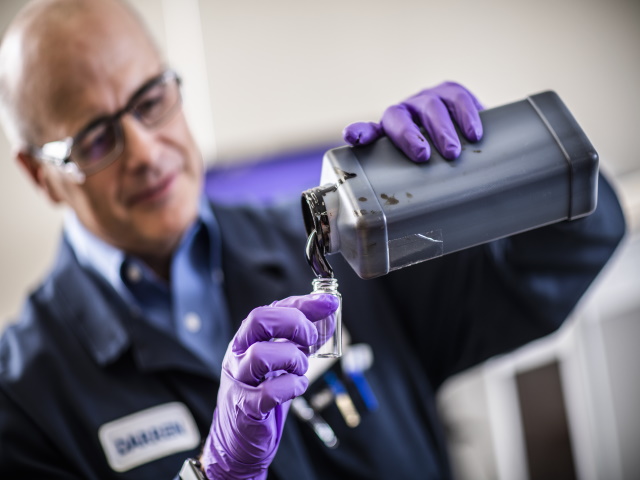Article
Determination of organic chloride content in crude oil
Organic chlorides in crude oil are known to cause severe corrosion in crude tower overhead systems. As a result, refinery specifications for total organic chloride are to accept no more than 1 mg/kg in the crude oil sample. Accurate determination of total organic chlorides is crucial to the producer involved in custody transfer to ensure midstream acceptance of their product.
Organic chlorides are compounds containing a carbon-chlorine bond, which are widely used in the oil field as a wax dissolver. They are generally not present in crude oils and are typically the result of additives, cleaning solutions or chemicals used for oil recovery.
The presence of even a minimal amount of chlorides (a few ppm) can be catastrophic during crude oil fractionation in the refineries. In this process, organic chlorides become hydrochloric acid, which is highly corrosive and can cause considerable damage to distillation overhead systems.
For this reason, it is essential for producers of crude oil to have a good knowledge of the organic chlorides present in their products, particularly when transfer of custody is involved. They must meet refinery specification at no more than 1 mg/kg in the crude oil product they are producing or transferring.
Organic chloride analysis
Organic chloride content in crude oil can be detected through specialized laboratory analysis. Care and attention are essential while sampling and testing; chloride compounds are present everywhere and can easily be introduced into a sample by improper sampling procedures, contaminated sampling canisters, or even improper storage.
Testing for organic chlorides is completed on the naphtha fraction of crude where distillation is performed to 204°C (400°F). ASTM D4929 is the preferred test method set forward by industry standards for the determination of organic chloride in crude oils.
The challenge with the distillation of crude oil test specimens is to recover enough naphtha fraction, particularly when testing heavy crude. Enough sample must be recovered to allow for proper washing to remove trace inorganic contaminants, such as H2S and salts, while not introducing any potential sources of bias.
Distillation must be carefully performed to avoid conditions that would favor decomposition (cracking) and salt hydrolysis, which, when combined, have the potential for organic chloride formation. Rapid distillation with high heat temperatures can create these undesirable conditions and must be avoided to prevent a high bias in the test results.
The Element advantage
Element’s Energy Fluids laboratory uses ASTM D4929 method to test organic chloride content in crude oil. The ISO 17025 accredited lab has a proven track record for preventing false positives of our organic chlorides test results, and takes part in ‘organic chloride content in crude oil proficiency testing’ twice a year, which allows for full confidence in the accuracy of our results.
Our team of experts have perfected procedures to maximize difficult naptha recoveries from heavy crudes while preventing contamination. Our services help upstream producers of crude oil, midstream blenders and pipelines to ensure that their product is free of corrosive halogens, which is essential prior to delivery at the refinery.
For more information on organic chloride analysis in crude oil, or to speak with one of our expertscontact ustoday.
making certain for nearly 190 years
More from Element
乐动体育足球




Services
Sour Service Corrosion Testing
Element is one of a few ISO certified sour service labs in the world, providing sour service corrosion services for a variety of test types including NACE MR0175/ISO 15156.
Read More

services
Product Testing
From environmental and dynamic testing to highly specialized tests such as bird strike and hydrodynamic ditching testing, we're the trusted testing partner to the world's most recognized component and system manufacturers.
Read More

resource
乐动LOL
发现博客、文章、白皮书,webinars, and advice from our world-leading testing, inspection, and certification experts.
Read More



